On The Way: The Daily Zen Journal
The Mind Dharma
Lu K'uan Yu (1898-1978)
According to the Ch’an method, self-cultivation begins with the control of mind as the starting point. By mind is meant the wandering mind, always in search of something in the realm of unreality. It is said that one who realizes this self-mind can perceive self-nature and attain enlightenment. By self-mind is meant the pure mind that is not stirred by a single thought.
We have been so inextricably enmeshed by our false thoughts since time without beginning, we find it difficult to free our minds from false views which screen us from our inherent wisdom. We are, however, endowed with a latent potentiality which no amount of teaching can reach because of obstinate clinging to empty names and terms implicit in human language.
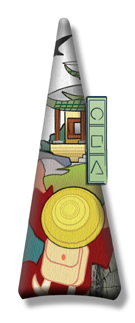
Even Ananda, one of the most intelligent disciples of the Buddha, was reprimanded for clinging to names and terms which caused him to neglect self-cultivation; how much more so are people in this period of decline of the Dharma?
The Inner Potentiality
This inner potentiality can, however, be aroused and vitalized by the Ch’an technique and developed to the full so that it can absorb and unite with the Truth. This is the transmission of the mind dharma, outside of the teaching, which the Buddha handed down to Mahakasyapa when he held up a flower to probe his disciples’ abilities to perceive the substance of his essential body (Dharmakaya) through its function of raising the flower, and when his chief disciple understood the revealing gesture and acknowledged it with a broad smile.
The Ancient Technique
This transmission was successively passed down through the Indian and Chinese Patriarchs. In ancient times, it was sufficient for an enlightened teacher to give some hint of the presence of self-nature inherent in his pupil who immediately awakened to it, thereby attained enlightenment, and succeeded to the Mind Dharma. Such a student was likened to a good horse which started galloping at the mere shadow of a whip.
For life was so simple in olden times that a disciple had only a few desires which could be easily eliminated for the purpose of quieting the mind so that he could perceive self nature and attain enlightenment.
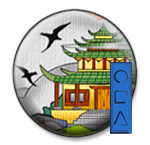
The Kung An Device
Later with the advance of material civilization, when life became complicated with the result that spiritual awakening was very difficult to achieve, the masters were compelled to change their tactics by employing words, sentences, shouts, roars of laughter, gestures, and blows of the staff to awaken their students so that the latter could perceive the essential bodies of their teachers through the revealing functions of speaking, shouting, laughing and gesticulating.
All these acts were later called kung ans (Japanese, koans), which were concurrent causes that provoked the awakening of deluded disciples whose minds were already disentangled from illusions and whose potentialities were vitalized to the full, ready to unite with the truth.
In fact, the kung an device had been used long ago by the Buddha when he held up a flower to cause Mahakasyapa’s enlightenment and later by Bodhidharma when he said: “So have I quieted your mind.” to awaken Hui K’o, the first Chinese Patriarch.
Kung ans are, therefore, not riddles and riddle-like problems which students should solve before their enlightenment, for kung ans are full of meaning which is clear only to those who have rid themselves of discrimination and discernment.
Obviously, they are incomprehensible to unenlightened people who grasp at externals and cling to the names and terms of conditioned human language. However, as soon as they keep from illusions, that is when their minds are not stirred by thoughts, or when they have taken the “host” position, they will understand all kung ans without making the least effort.
Consequently, it is misleading to pretend that Ch’an training begins with the so-called solution of these so-called riddles and that all the seventeen hundred kung ans, a number frequently mentioned in Ch’an texts, should be properly solved before awakening can take place.
This is tantamount to putting the cart before the horse and will never lead to awakening, for a student should first discipline the wandering mind so as to disengage from seeing, hearing, feelings and knowing for the purpose of realizing singleness of mind, in order to be able to see clearly and to take up the host position before a kung an can be interpreted correctly.
One will never understand it so long as the mind is screened by externals, and if you take up the “guest” position, you cannot comprehend the esoteric meanings of kung ans. After you succeed in disciplining the mind, with no further thoughts arising therein, you are able to understand not only the seventeen hundred ancient kung ans,…but you will see nothing strange, absurd or eccentric in this Ch’an technique.
If, instead of disciplining the mind, the student is urged to stir it in search of the so-called solution of kung ans, he will be turned round by the unending flow of thoughts and will never be able to pause for a moment to see clearly.
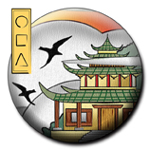
Consequently, the prerequisite of Ch’an training is to apply a brake to the wandering mind so that it can be quieted and that, after all illusions have vanished, the self-possessed wisdom can return to its normal state and function as it should. Therefore, even before starting Ch’an practice, it is imperative that we know how to stop the ever-flowing thoughts that have been stirring our minds since time without beginning.
We “live” because we “think,” and if we want to escape from this realm of suffering, the first thing is to realize a mind free from all thoughts. We know that the human body and the ego which is supposed to be its owner are but phenomenal creations of our deluded minds and are, therefore, false because they have no permanent nature and no existence of their own. The sutra says: “Just by mind control, all things become possible to us.”
Since Mind is an aspect of the self-nature, the Sixth Patriarch said to his disciples:
Our self-natured bodhi is fundamentally pure and clean. Use only this mind for your direct understanding and attainment of Buddhahood … This business should begin with the self-nature. At all times, instant after instant, you should purify your own minds, and practice self-cultivation so that you will not have come to this meeting in vain.
Lu K’uan Yu (1898-1978)
Excerpted from The Secrets of Chinese Meditation – Lu K’uan Yu 1964
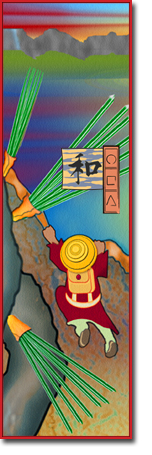



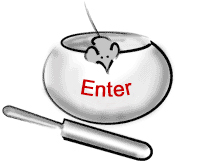
There are many techniques for stilling the mind which is the first step in practice. According to each person’s vasanas, or tendencies, we are drawn to one school or another.
However, there are also endless ways to distract ourselves, and there are charming side paths to explore. Some devices can engender a kind of spiritual acquisitiveness where we are entranced to get more initiations, attend more retreats, and solve all the koans, which can reinforce our sense of “self” rather than help us get to a more fundamental sense of being.
There is no place in the journey where we can just set the controls to autopilot and cruise on forward. Whether we have a teacher or train alone, there needs to be a way to question ourselves and our practice to keep us on track. And one of the hardest things to do is question ourselves.
May our practice be true!
Elana, Scribe for Daily Zen